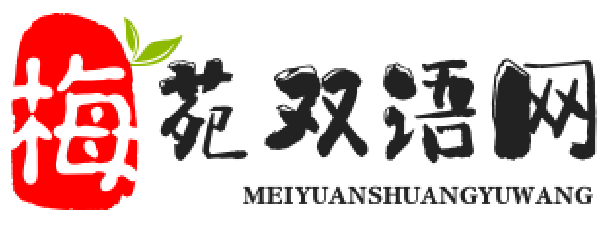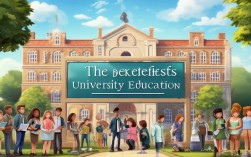题型解析——“同意与否”题型的核心
“剑14”作为雅思备考的重要参考,其写作题型非常具有代表性。“同意与否”是Task 2中最常见的题型之一。 特征:** 通常以 "To what extent do you agree or disagree?" 或 "Do you agree or disagree?" 的形式出现。

核心要求:
- 立场鲜明: 你必须明确表达自己的观点,是完全同意、完全不同意,还是部分同意部分不同意(即“有条件同意”),在学术写作中,“有条件同意” 通常是最稳妥、最容易展开的写法,因为它能让你从多个角度进行论证,显得思考更全面。
- 论证充分: 你的观点需要有清晰、有力的理由来支撑,每个理由都应该是一个独立的主体段。
- 结构清晰: 遵循标准的“四段式”或“五段式”结构。
第二部分:模拟题目构思
我们来看一道模拟的“剑14”风格题目,这道题融合了科技、教育和社会等多个热点领域。 **
Some people believe that the increasing use of technology in education, such as tablets and online resources, is beneficial for students' learning. To what extent do you agree or disagree?
一些人认为,在教育中越来越多地使用技术,如平板电脑和网络资源,对学生的学习有益,你在多大程度上同意或不同意?
第三部分:思路拆解与构思
后,不要急于动笔,先进行“头脑风暴”,构思你的观点和论据。
审题与关键词分析:
- 核心议题: 技术在教育中的应用。
- 技术例子: tablets (平板电脑), online resources (网络资源)。
- 核心观点: beneficial for students' learning (对学生的学习有益)。
- 任务: To what extent do you agree or disagree? (你在多大程度上同意或不同意?)
确立立场: 如果选择“完全同意”,论证会显得有些单薄,因为技术带来的问题(如视力下降、网络干扰)是客观存在的,如果选择“完全不同意”,则与主流观点相悖,论证难度极大。
最理想的立场是 “部分同意”,即: 我同意技术在教育中确实能带来显著的好处,但同时也认为它存在一些不容忽视的弊端,因此其应用需要谨慎和有度。
这个立场既肯定了技术的价值,也指出了其局限性,非常平衡,易于展开。
构建论点:
-
同意的理由 (Body Paragraph 1 - Advantages):
- 论点1:提升学习资源的可及性与丰富性。 互联网打破了地域和时间的限制,学生可以接触到海量的学习资料、在线课程和互动模拟实验,这是传统教科书无法比拟的。
- 论点2:实现个性化学习与即时反馈。 教育软件和应用程序可以根据学生的学习进度和强弱项,提供定制化的练习,在线测验可以立即给出反馈,帮助学生及时纠正错误。
-
不同意的理由 (Body Paragraph 2 - Disadvantages):
- 论点1:可能导致学生分心和社交技能退化。 学生可能会被游戏、社交媒体等与学习无关的内容分心,过度依赖技术进行线上交流,可能会减少他们面对面沟通和协作的机会,影响社交能力的发展。
- 论点2:可能加剧教育不平等。 并非所有学生都能平等地获得先进的设备和稳定的网络连接,这可能会导致“数字鸿沟”,使得家境优越的学生获得更多学习优势,而弱势群体则被进一步边缘化。
构思结论: 在结论中,重申你的“部分同意”立场,并可以提出一个建议或展望,技术是强大的辅助工具,但不应完全取代传统教学,未来的理想模式应是“技术赋能”与“人文关怀”相结合的混合式学习。
第四部分:范文展示
以下是根据上述思路撰写的一篇高分范文。
Essay:
The integration of technology into the educational landscape, exemplified by tools like tablets and online platforms, has sparked considerable debate. While some herald this shift as a panacea for enhancing learning, I hold the view that its benefits, though substantial, are accompanied by significant drawbacks that necessitate a cautious approach.
On the one hand, the advantages of employing technology in education are undeniable. Firstly, it dramatically expands the accessibility and diversity of learning resources. A student in a remote area can now access the same lectures from a world-renowned university as their peers in a major city, thanks to the internet. This democratization of information breaks down geographical and socio-economic barriers, fostering a more equitable learning environment. Secondly, technology facilitates personalized learning and provides immediate feedback. Adaptive learning software can tailor exercises to a student's specific needs, focusing on areas where they struggle. Moreover, online quizzes and interactive applications offer instant results, allowing learners to identify and rectify their mistakes promptly, which accelerates the learning process.
On the other hand, the over-reliance on technology in education presents several notable challenges. A primary concern is the potential for distraction and the erosion of essential social skills. The same device used for research can easily become a portal to games or social media, diverting students' attention from their academic tasks. Furthermore, excessive screen time and reduced face-to-face interaction can hinder the development of communication and teamwork abilities, which are crucial for personal and professional success. Another critical issue is the digital divide. The benefits of technology are not universal; students from underprivileged backgrounds may lack access to high-speed internet or modern devices, thereby widening the gap between the advantaged and the disadvantaged.
In conclusion, while I acknowledge that technology offers powerful tools to enrich the educational experience, I cannot fully agree that its increasing use is unequivocally beneficial. It is a double-edged sword that enhances resource access and personalization but also risks fostering distraction and exacerbating inequality. Therefore, the key lies in a balanced and integrated approach, where technology is used as a supplementary tool to augment, not replace, the irreplaceable elements of traditional teaching, such as human interaction and guidance.
第五部分:范文解析
-
结构清晰:
- 引言段: 开门见山,承认话题的复杂性,并明确提出“部分同意”的立场。
- 主体段1 (同意): 用 "On the one hand" 引导,从“资源可及性”和“个性化学习”两个角度详细阐述技术的好处,使用了 "democratization of information", "personalized learning", "immediate feedback" 等高级词汇。
- 主体段2 (不同意): 用 "On the other hand" 引导,从“分心与社交技能”和“数字鸿沟”两个角度阐述技术的弊端,使用了 "over-reliance", "erosion of essential social skills", "digital divide" 等精准词汇。
- 结论段: 用 "In conclusion" 总结全文,再次强调“双刃剑”的观点,并提出“平衡整合”的解决方案,使文章立意更高。
-
词汇与句式:
- 词汇: 使用了学术性较强的词汇,如
integration,landscape,herald this shift as a panacea,democratization,facilitates,over-reliance,erosion,exacerbating inequality等。 - 句式: 句式多样化,避免了简单句的堆砌,使用了 "While some herald..., I hold the view that..." 这样的让步状语从句,以及 "Firstly... Secondly..." 这样的逻辑连接词,使文章逻辑流畅。
- 词汇: 使用了学术性较强的词汇,如
-
论证逻辑:
- 每个主体段都有一个清晰的主题句,概括了本段的核心观点。
- 主题句之后,都提供了具体的解释和例证,使论证有理有据,不空洞。
希望这份详细的解析和范文能帮助你更好地理解和应对雅思“剑14”风格的写作任务,多读、多思、多练是提高写作水平的不二法门。











